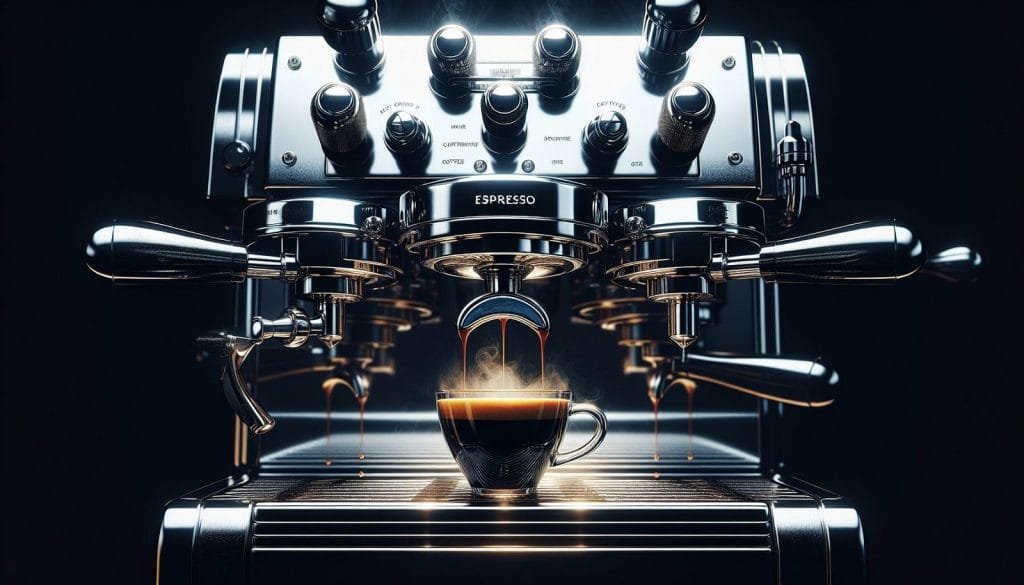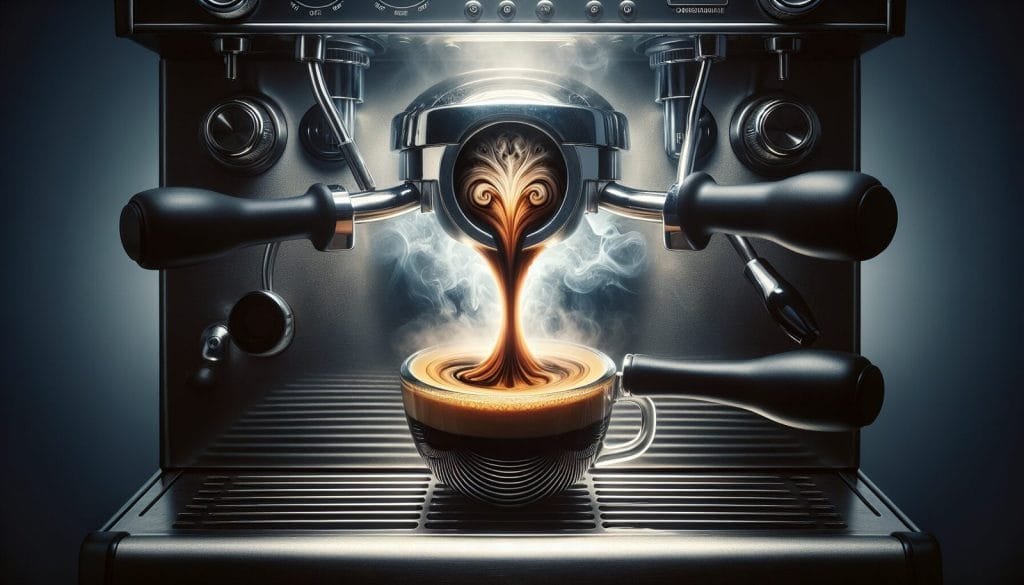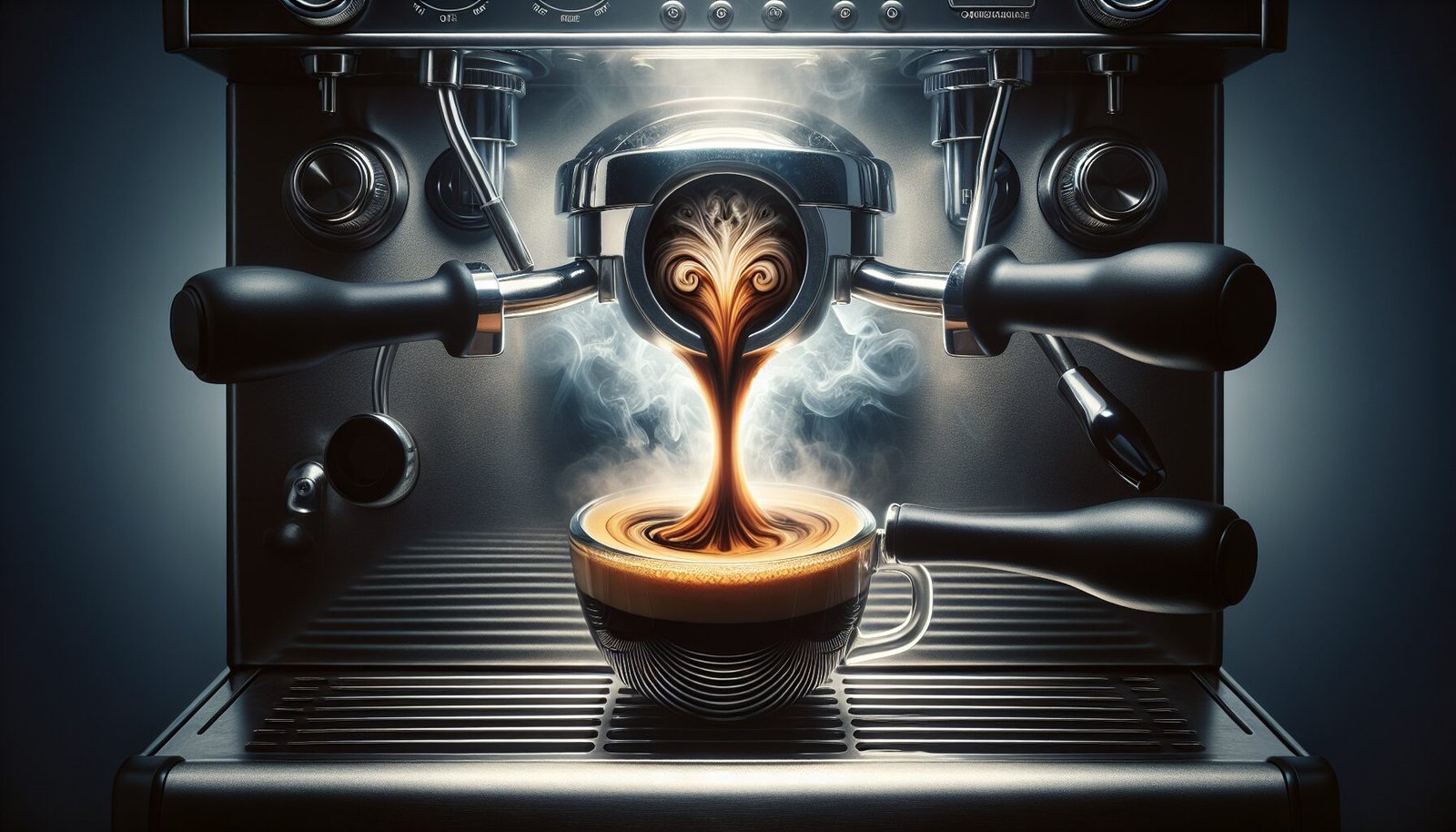In the realm of caffeine connoisseurs, the debate surrounding the equivalence of espresso shots and a cup of coffee caffeine continues to provoke interest and curiosity. As the coffee industry flourishes and individuals seek the optimal dose of this stimulant, it becomes imperative to unravel the mystery of this espresso-coffee equation. In this article, we explore this very question, delving into the intricate world of coffee measurements and seeking to determine the number of espresso shots that truly equate to a standard cup of coffee’s caffeine content. Join us on this academic journey as we explore the complexities and nuances that lie within this captivating topic.
Espresso vs Coffee
Espresso and coffee are both popular caffeinated beverages, but they differ in several aspects. These differences can be seen in the preparation, taste, and caffeine content. Understanding the distinctions between espresso and coffee is essential for making informed choices about your caffeine consumption.
Difference in preparation
The preparation methods for espresso and coffee are distinct. Coffee is typically brewed by soaking ground coffee beans in hot water, allowing the water to extract the flavor, oils, and caffeine from the beans. This process can be done through various methods, such as drip brewing, French press, or pour-over.
On the other hand, espresso is made by forcing hot water through finely ground coffee beans at high pressure. The water passes through the coffee grounds quickly, resulting in a concentrated and strong beverage. The speed and pressure of the brewing process give espresso its distinct characteristics.
Difference in taste
One noticeable difference between espresso and coffee is the taste. Coffee brewed using traditional methods tends to have a smoother, milder flavor profile. The longer brewing time allows for a more balanced extraction of flavors, resulting in a rich and aromatic cup. The taste of coffee can vary depending on factors such as the roast level and coffee bean origin.
Espresso, in contrast, offers a more intense and concentrated flavor. The high-pressure brewing process extracts the flavor compounds more quickly, resulting in a bold and robust taste. Espresso carries a distinct bitterness, which is often balanced by the addition of milk or sugar in espresso-based drinks like cappuccinos and lattes. The concentrated nature of espresso allows for more nuanced flavors to be highlighted.
Difference in caffeine content
One aspect that often sparks curiosity among coffee enthusiasts is the difference in caffeine content between espresso and coffee. Despite its strong taste, espresso actually contains less caffeine per serving compared to a standard cup of coffee. This might seem surprising, considering the intense flavor and concentration of espresso.
Measuring Caffeine
Caffeine is a natural stimulant found in coffee beans and various other plants. It is measured in milligrams (mg) and is known to have stimulating effects on the central nervous system. Understanding how caffeine is measured and the respective content in coffee and espresso is crucial for evaluating their caffeine intake.
Standard measurement of caffeine
When it comes to measuring caffeine, it is important to note that there is no exact science due to variations in brewing methods, bean origin, and other factors. However, it is generally accepted that on average, a standard 8-ounce cup of brewed coffee contains about 95 mg of caffeine.
Caffeine content in coffee
The caffeine content in coffee can vary depending on factors such as the type of coffee bean, the roasting level, and the brewing method. Lighter roasts generally have slightly more caffeine compared to darker roasts, as the longer roasting process tends to decrease the caffeine content. However, these differences in caffeine content between roast levels are minimal.
Caffeine content in espresso
Contrary to what one might expect, espresso contains less caffeine compared to regular brewed coffee. On average, a single shot of espresso, which is typically about 1 ounce, contains around 63 mg of caffeine. This is significantly lower than the caffeine content in a standard cup of coffee.

Factors Affecting Caffeine Content
Several factors influence the caffeine content in both coffee and espresso. Understanding these factors can help explain the variations in caffeine levels and why certain brewing methods yield different results in terms of caffeine content.
Coffee bean selection
The type and quality of coffee beans used play a role in determining the caffeine content. Arabica beans, the most commonly consumed coffee variety, generally have a lower caffeine content compared to Robusta beans. Robusta beans, while often considered to be of lower quality, contain roughly double the amount of caffeine found in Arabica beans. Consequently, the choice of coffee bean can impact the overall caffeine content in the final beverage.
Roasting
Roasting affects the caffeine content in coffee and espresso. As mentioned earlier, coffee beans lose some caffeine during the roasting process, but the decrease is relatively minimal. However, darker roasts, which are roasted for longer periods of time, can result in a slightly lower caffeine content compared to lighter roasts. This is due to the extended exposure to high heat, which causes some of the caffeine to break down.
Grind size
The grind size of coffee or espresso beans can impact the caffeine content. Finely ground beans, such as those used for espresso, have a larger surface area exposed to water during brewing. This increased surface area can enhance the extraction process, potentially resulting in higher caffeine levels. In contrast, coarsely ground coffee beans, such as those used for French press brewing, have less surface area in contact with water, leading to lower caffeine extraction.
Brewing time
The duration of the brewing process affects the caffeine content in coffee and espresso. Longer brewing times allow for a more thorough extraction of caffeine from the coffee grounds, resulting in a higher caffeine content. For instance, drip brewing methods often involve longer brewing times compared to espresso, which can lead to higher caffeine levels in the final cup.
Water temperature
The water temperature used during brewing also influences caffeine extraction. Higher water temperatures tend to yield higher caffeine content in the resulting beverage. Espresso, brewed under high pressure at temperatures around 195 to 205 degrees Fahrenheit (90 to 96 degrees Celsius), has a relatively short contact time with the water. This shorter contact time, combined with the high pressure, contributes to the lower caffeine content in espresso compared to regular coffee.
Cup Size and Caffeine Content
Understanding the relationship between cup size and caffeine content is important for accurately assessing the amount of caffeine consumed per serving. The standard cup size for coffee and the variations in cup sizes can impact the overall caffeine intake.
Standard cup size
In the coffee industry, a standard cup size is equivalent to 8 fluid ounces (237 milliliters). This is often used as a benchmark for measuring and comparing the caffeine content in coffee beverages.
Differences in cup sizes
It is essential to be aware that cup sizes can vary significantly between different coffee shops and establishments. Common sizes available at specialty coffee shops include 12 ounces (355 milliliters), 16 ounces (473 milliliters), and even larger options for those who prefer more substantial servings. These larger cup sizes have a direct impact on the overall caffeine intake per cup.
Determining caffeine content per cup
To determine the caffeine content in a cup of coffee, you can refer to the standard measurement of 95 mg of caffeine per 8-ounce cup. From there, you can adjust the caffeine content based on the cup size used. For example, a 12-ounce cup would contain approximately 142.5 mg of caffeine, assuming the same ratio. Similarly, a 16-ounce cup would contain approximately 190 mg of caffeine.

Espresso Shot and Caffeine Content
The term “espresso shot” refers to the standard serving size of espresso, which is typically about 1 ounce. Understanding the caffeine content in an espresso shot and the potential variations is essential for managing caffeine intake accurately.
Standard espresso shot size
A standard espresso shot is typically measured at around 1 ounce (30 milliliters) in volume. This is the base serving size for espresso-based drinks like lattes and cappuccinos.
Caffeine content in an espresso shot
On average, a single shot of espresso contains approximately 63 mg of caffeine. However, it is crucial to note that the caffeine content can vary depending on several factors, such as the coffee bean variety, the roasting level, the grind size, and the brewing parameters.
Variations in caffeine content
Despite the standard measurement, variations in caffeine content can occur due to different brewing techniques and preferences. Some espresso shots may have slightly lower or higher caffeine content depending on factors such as the extraction time, water temperature, or the aiming for a more concentrated or milder shot. However, these variations are not typically significant enough to challenge the general understanding of espresso shot caffeine content.
Comparison: Cups of Coffee to Espresso Shots
Comparing cups of coffee to espresso shots can help determine the caffeine content equivalence between the two beverages. While it is challenging to establish an exact ratio, there are general benchmarks used for estimation.
Traditional coffee to espresso ratio
A common rule of thumb used to compare coffee and espresso is that one shot of espresso, approximately 1 ounce, is equivalent to a standard 8-ounce cup of coffee in terms of caffeine content. However, it is important to remember that the taste and experience of coffee and espresso are markedly different, beyond just the caffeine content.
Determining the number of espresso shots equivalent to a cup of coffee
To estimate the number of espresso shots equivalent to a cup of coffee, you can use the aforementioned ratio. If an 8-ounce cup of coffee contains around 95 mg of caffeine, and a standard espresso shot has approximately 63 mg of caffeine, then it would take roughly 1.5 shots of espresso to match the caffeine content in a cup of coffee. However, factors such as personal preferences, brewing methods, and variations in caffeine content should also be taken into account.
Drinking Habits and Caffeine Consumption
Individual preferences and habits play a significant role in determining the amount of caffeine consumed. Understanding the impact of choosing coffee or espresso and considering one’s caffeine sensitivity is vital for managing an appropriate caffeine intake.
Preference for coffee or espresso
Personal preferences often dictate whether one leans towards coffee or espresso. Some individuals may prefer the milder and more prolonged experience of a cup of coffee, while others may be drawn towards the concentrated strength and bolder flavor of espresso. These preferences can influence the overall caffeine intake and the frequency of consumption.
Effect on caffeine intake
Choosing between coffee and espresso can have implications for caffeine consumption. As discussed earlier, espresso shots generally contain less caffeine than standard cups of coffee. Therefore, individuals who prefer espresso may consume fewer milligrams of caffeine per serving compared to those who opt for larger cups of coffee. However, it is important to consider the number of espresso shots consumed and any additional ingredients or beverage sizes in specialty espresso-based drinks.
Considerations for caffeine-sensitive individuals
Caffeine sensitivity varies among individuals, with some individuals experiencing stronger reactions to caffeine than others. For those who are caffeine-sensitive, it is essential to be mindful of their caffeine intake and consider opting for decaffeinated versions of coffee or espresso. Decaffeinated options can still provide the enjoyable taste without the stimulating effects of caffeine.
Benefits of Espresso Shots
Espresso shots offer unique advantages that may appeal to certain individuals, beyond just their concentrated flavor. These benefits can include the concentration of flavor, higher caffeine concentration, and potential health benefits.
Concentration of flavor
Espresso shots are renowned for their robust and concentrated flavor profiles. The high-pressure brewing process extracts the flavor compounds more efficiently, resulting in a strong, aromatic, and complex taste. Espresso shots can highlight the subtle nuances and distinctive notes present in different coffee beans.
Higher caffeine concentration
Though espresso shots contain less caffeine per serving than a standard cup of coffee, the concentration of caffeine in each shot is higher. This concentrated caffeine content can provide a more immediate and intense energy boost, making espresso a popular choice for those seeking a quick pick-me-up.
Potential health benefits
Research suggests that moderate coffee consumption may offer potential health benefits. Coffee contains antioxidants and bioactive compounds that have been associated with a lower risk of certain health conditions, such as type 2 diabetes, Parkinson’s disease, and liver diseases. While these potential benefits apply to both coffee and espresso, the concentration of compounds in espresso shots may provide a more significant impact.
Potential Risks of Excessive Caffeine Consumption
While moderate caffeine consumption is generally safe for most individuals, excessive intake can lead to potential risks and adverse effects. Awareness of these risks, including caffeine sensitivity, negative effects on sleep, increased heart rate and blood pressure, addiction, and withdrawal symptoms, is crucial for maintaining a healthy relationship with caffeine.
Caffeine sensitivity
Individuals with caffeine sensitivity may experience adverse effects even with comparatively low caffeine intake. These effects can include restlessness, irritability, rapid heartbeat, and digestive discomfort. It is important to pay attention to individual tolerance and adjust caffeine consumption accordingly.
Negative effects on sleep
Caffeine is a stimulant that can disrupt sleep patterns if consumed too close to bedtime. It can delay or inhibit the onset of sleep, reduce the quality of sleep, and increase the frequency of nighttime awakenings. It is recommended to avoid consuming caffeine within a few hours of intended bedtime to promote healthy sleep habits.
Increased heart rate and blood pressure
Caffeine stimulates the central nervous system and can cause a temporary increase in heart rate and blood pressure, particularly in individuals who are caffeine-sensitive. This response can be further amplified by excessive caffeine consumption or if consumed in combination with other stimulants.
Addiction and withdrawal symptoms
Regular and prolonged consumption of caffeine can lead to dependence and possible addiction. Abruptly reducing or eliminating caffeine intake may result in withdrawal symptoms such as headaches, fatigue, irritability, and difficulty concentrating. It is advisable to decrease caffeine consumption gradually to minimize these potential effects.
Conclusion
Differentiating between espresso and coffee is essential when considering caffeine content and personal preferences. While both beverages offer distinct flavors and caffeine content, they cater to different tastes and consumption habits. Understanding the factors that affect caffeine content, such as coffee bean selection, roasting, grind size, brewing time, and water temperature, allows for informed choices. It is crucial to consider individual caffeine sensitivity, drinking habits, and potential risks associated with excessive caffeine consumption. By evaluating personal preferences alongside caffeine content, one can make more informed decisions to enjoy coffee and espresso in a healthy and satisfying manner.




